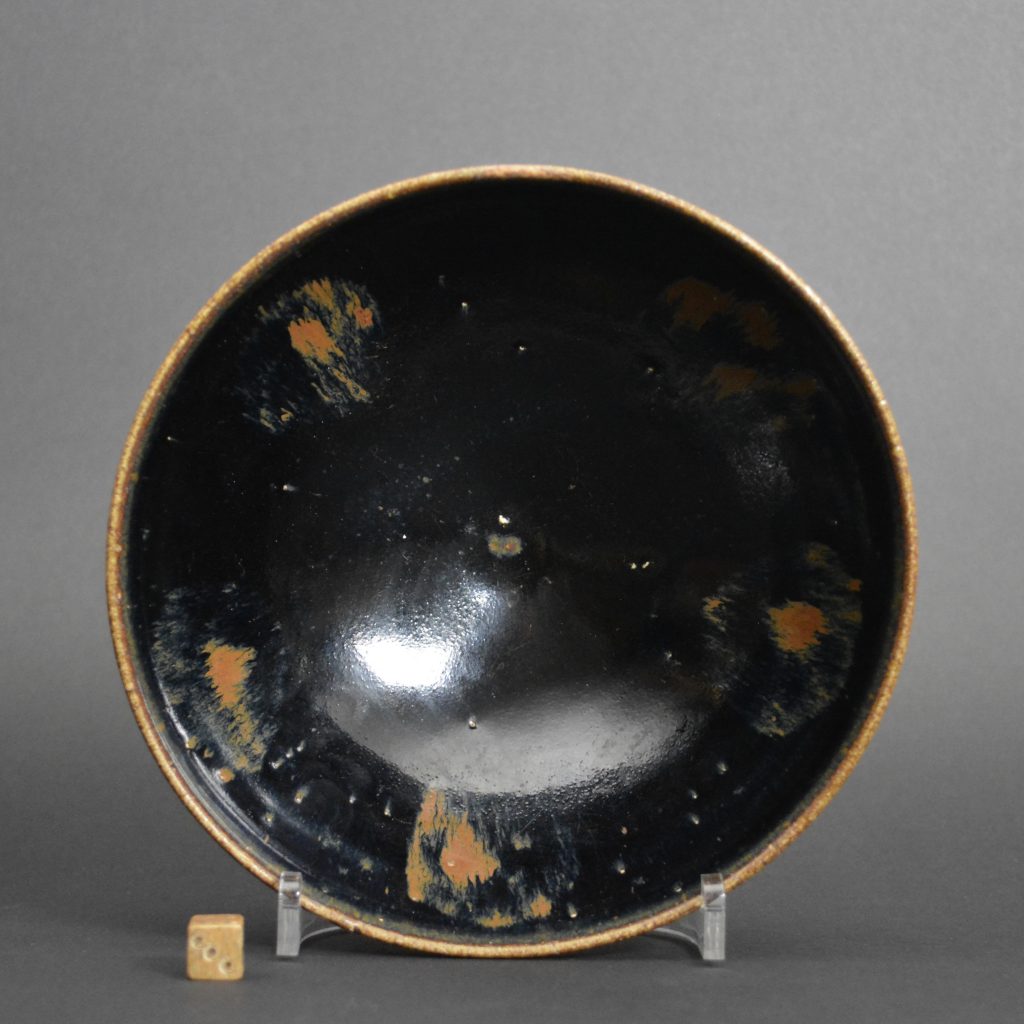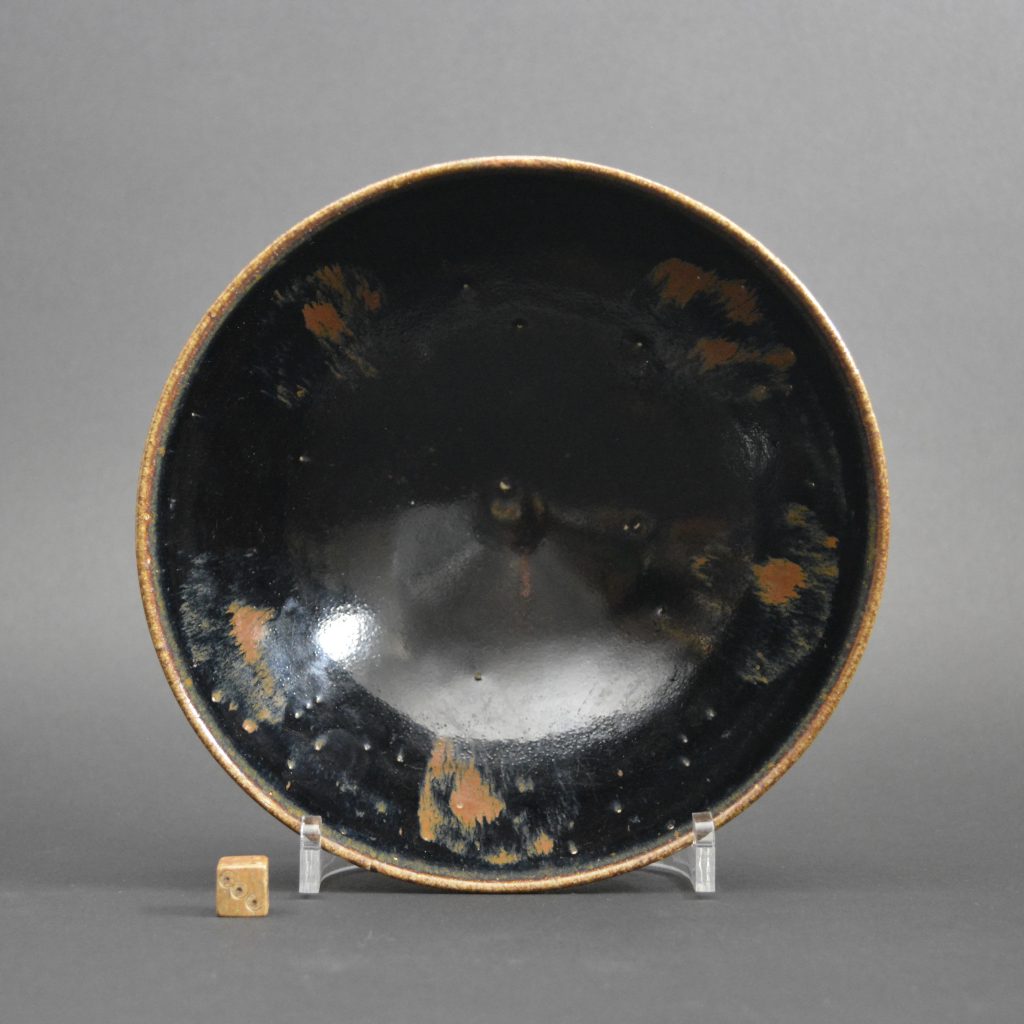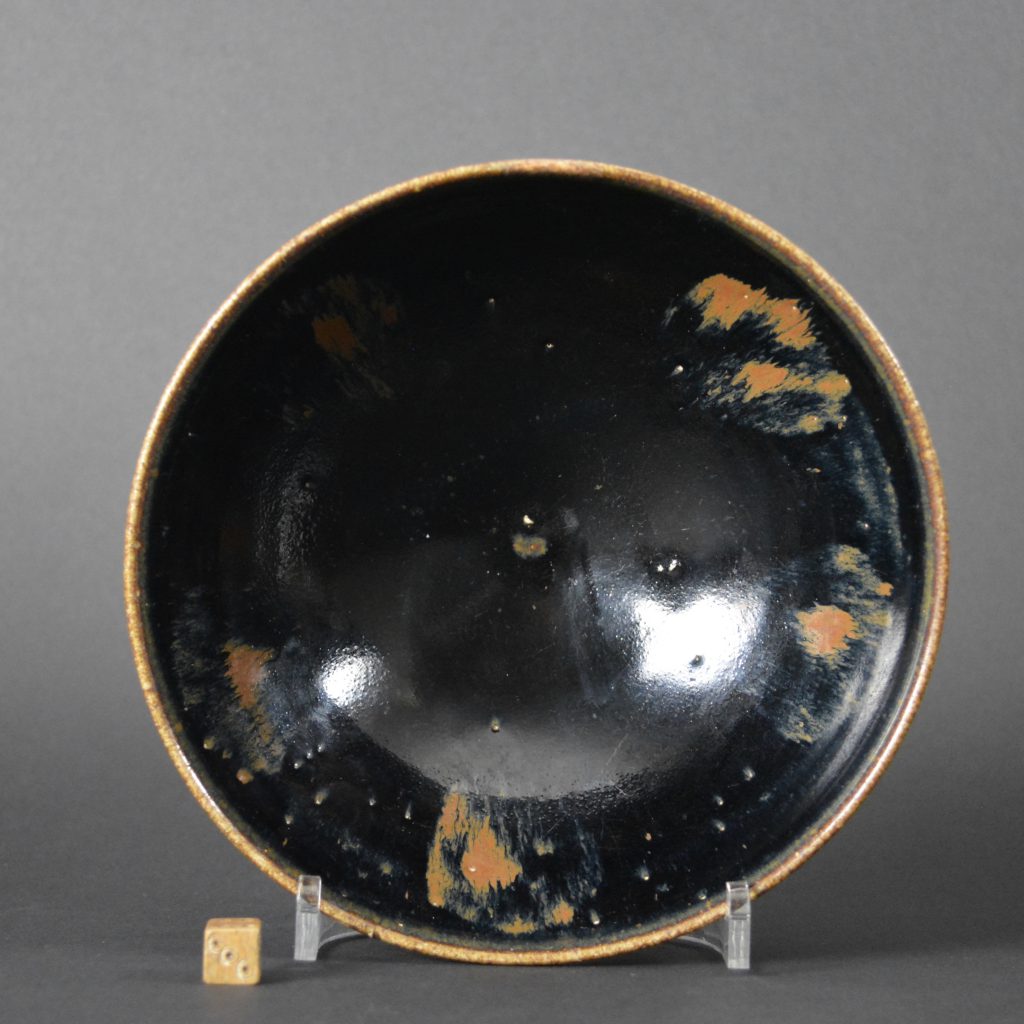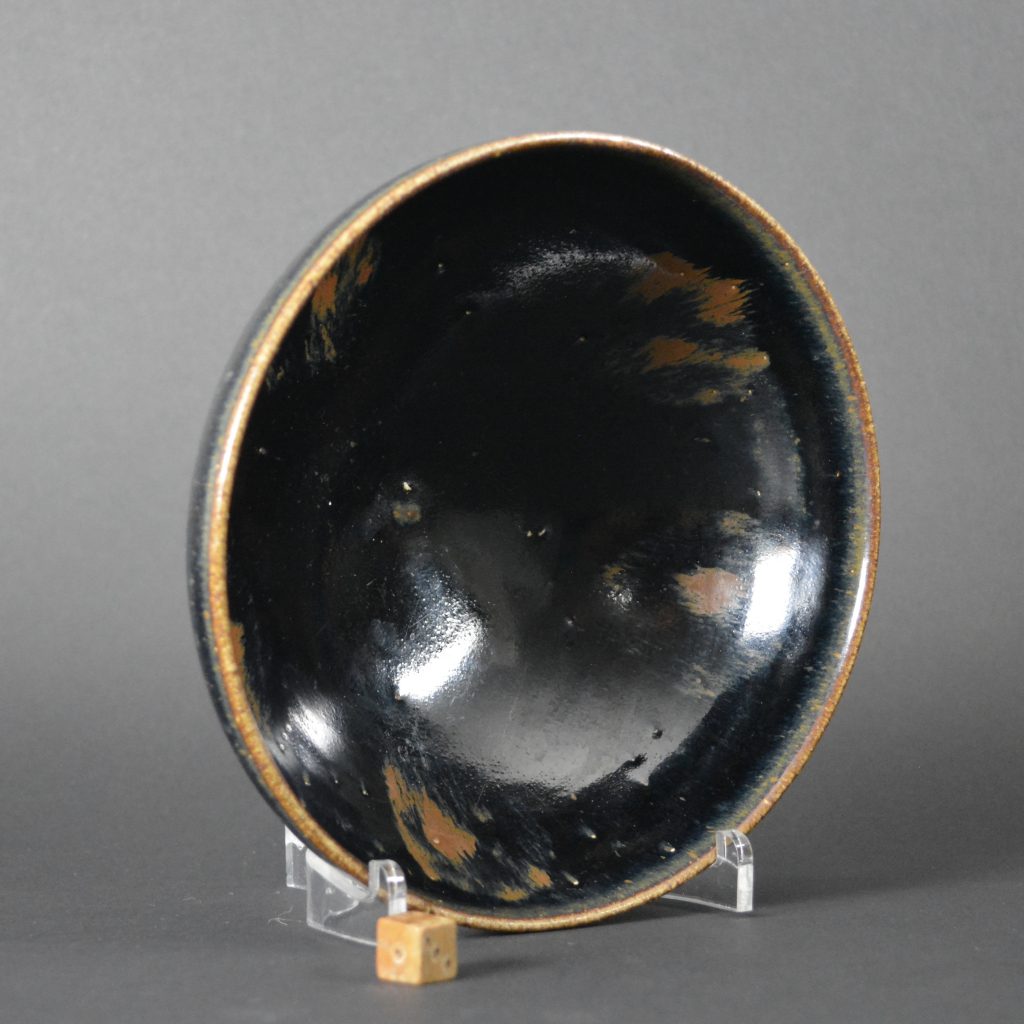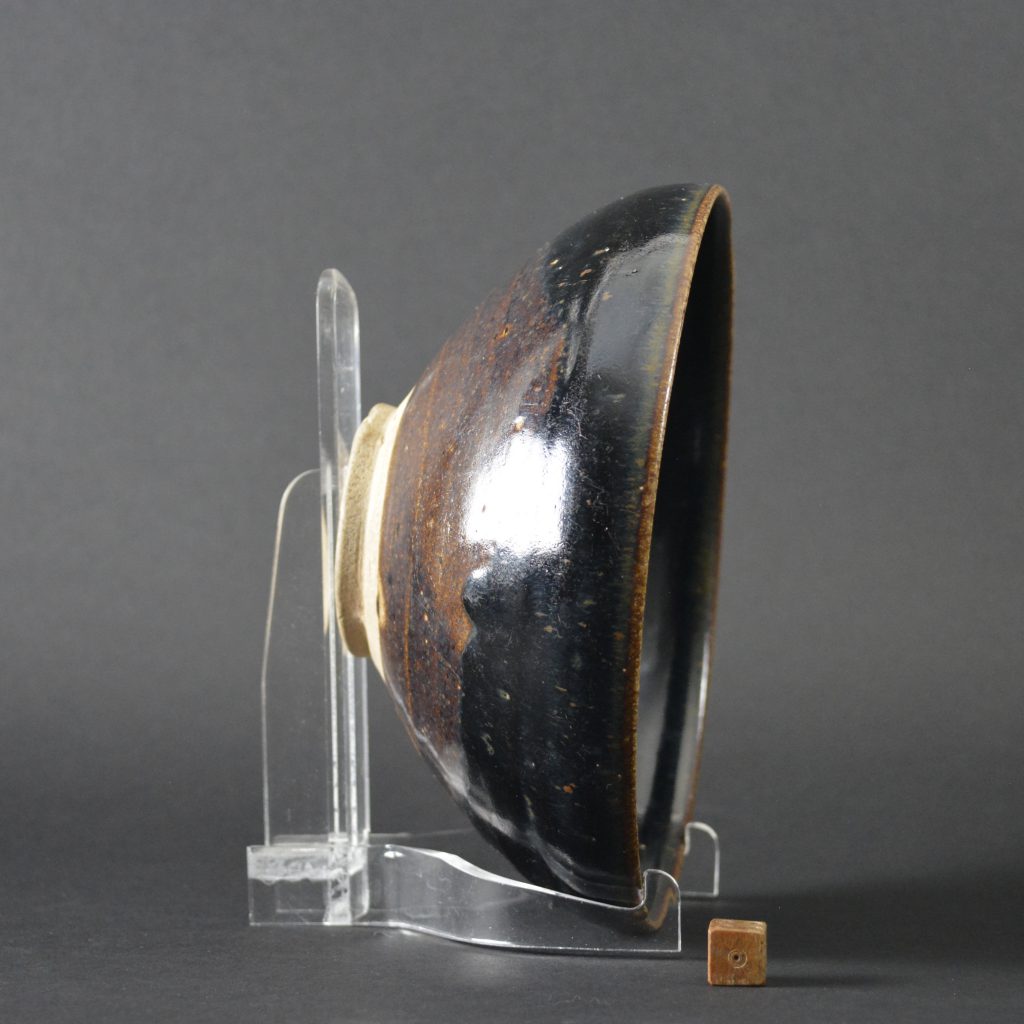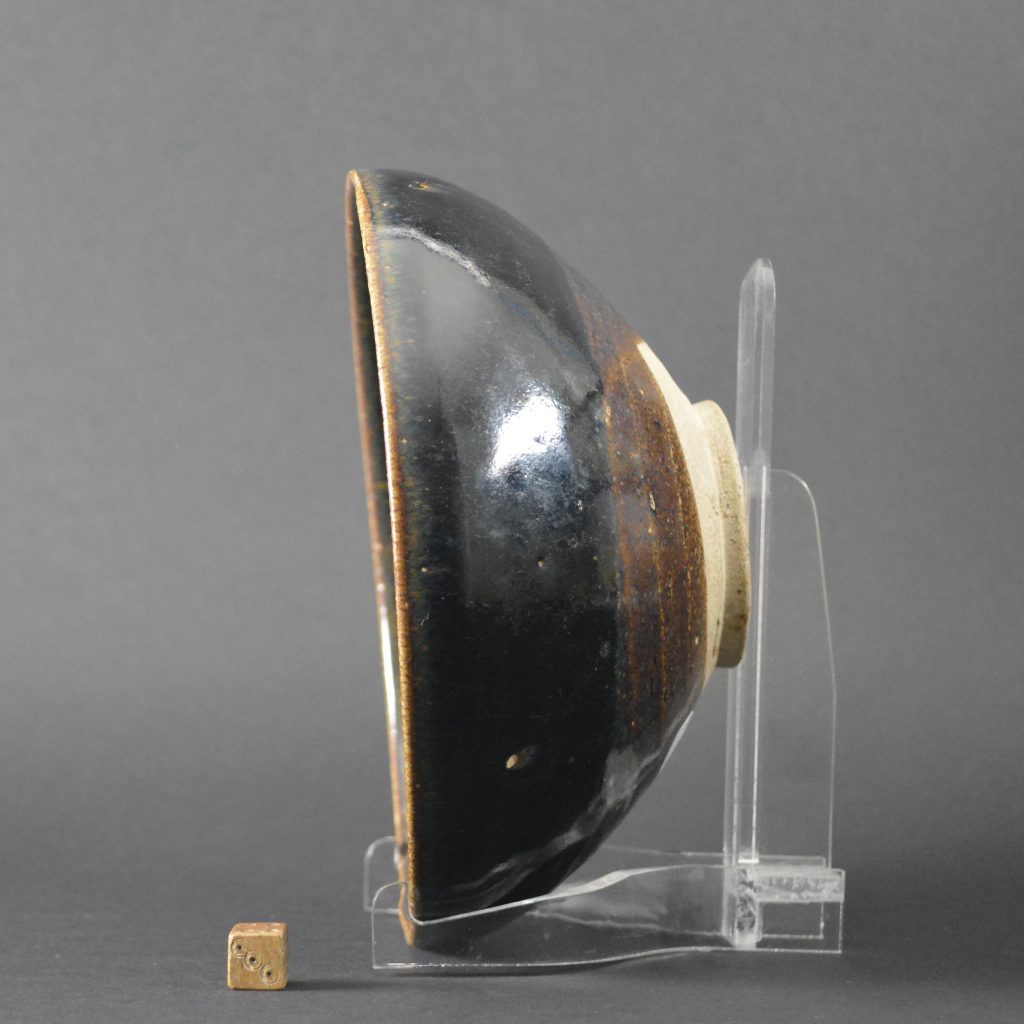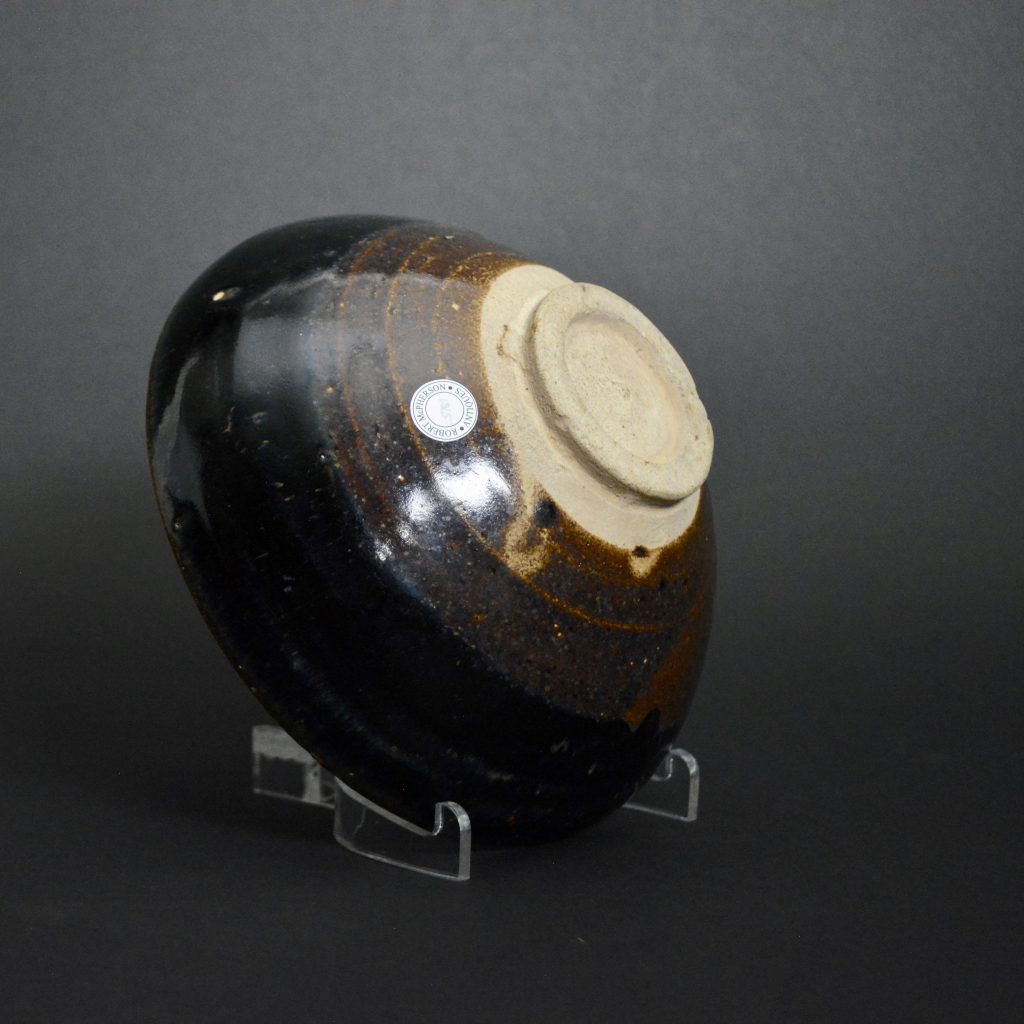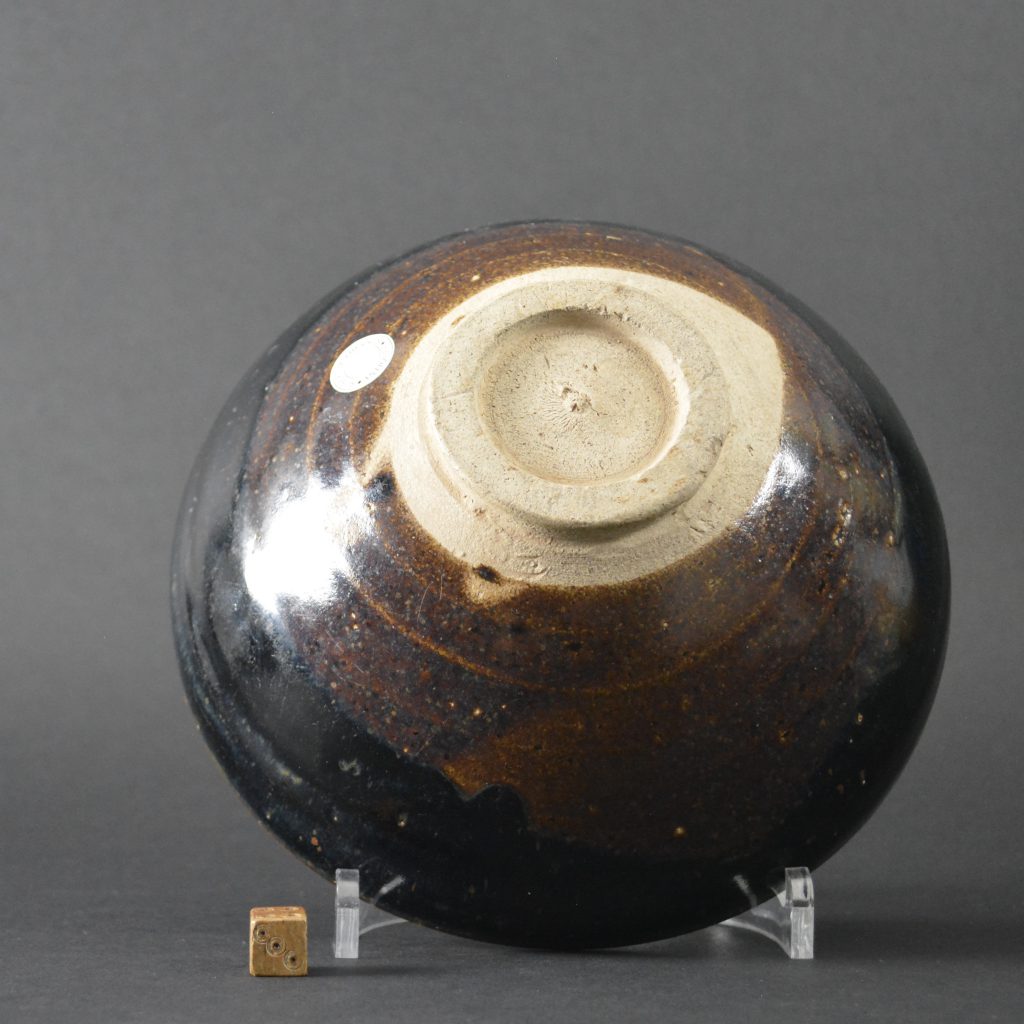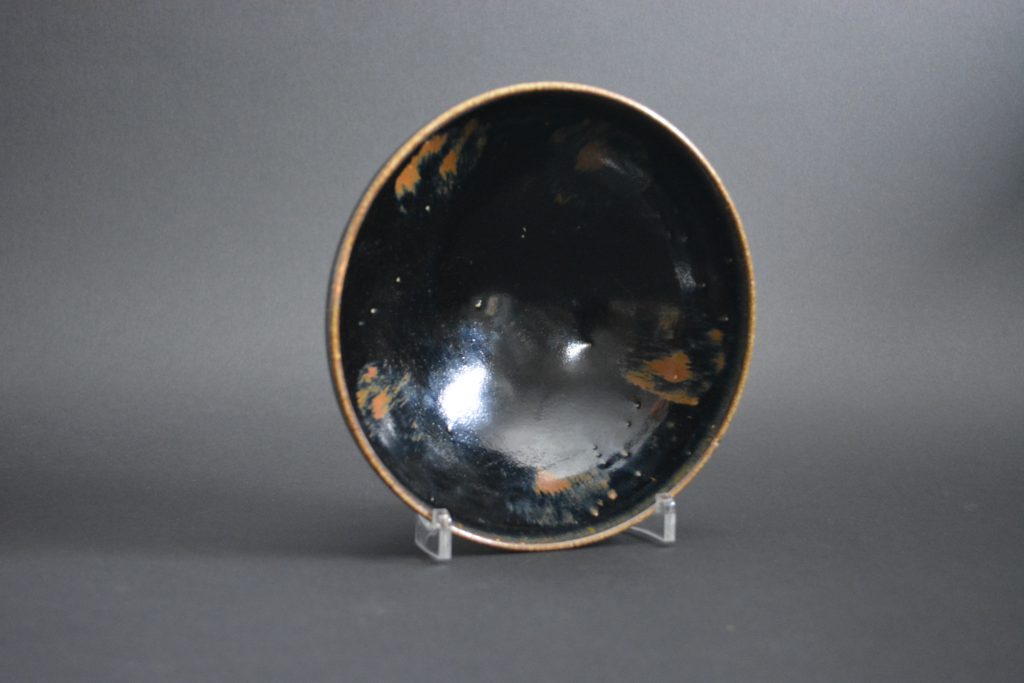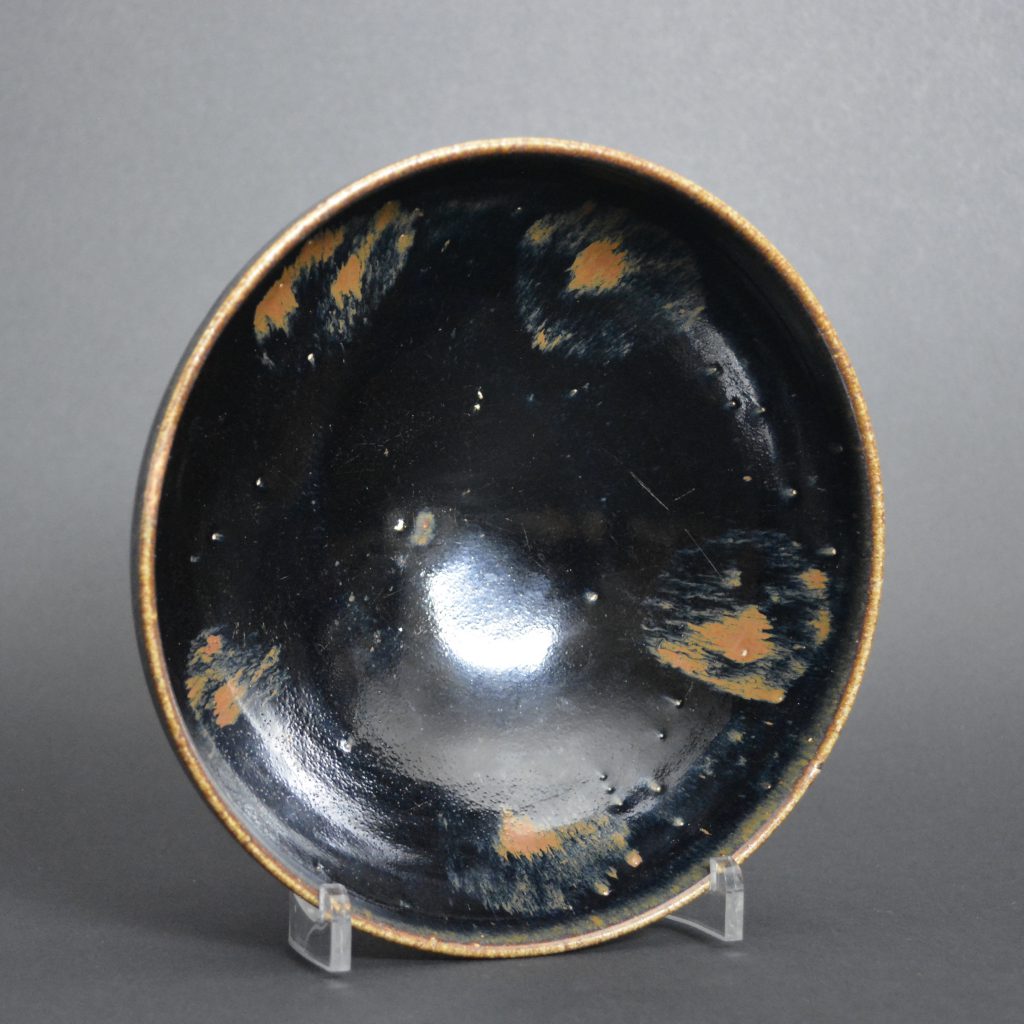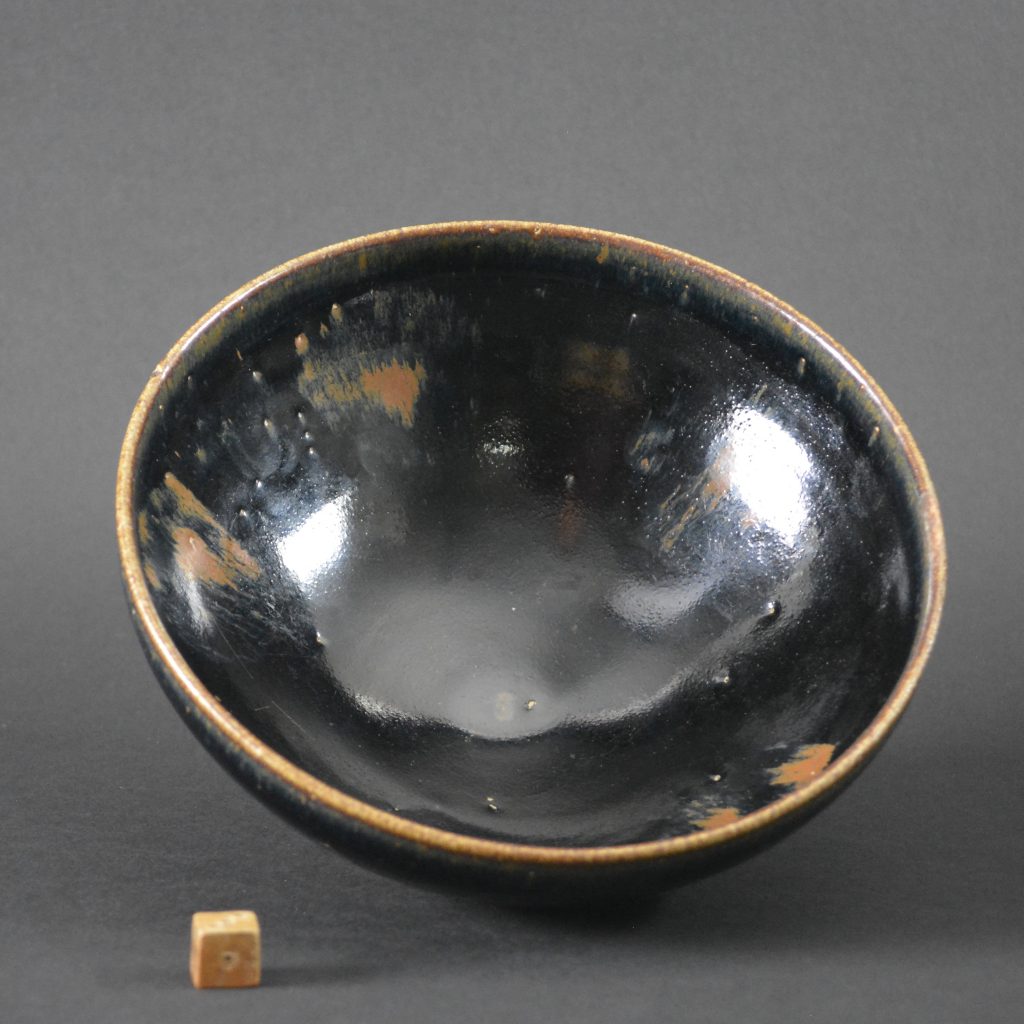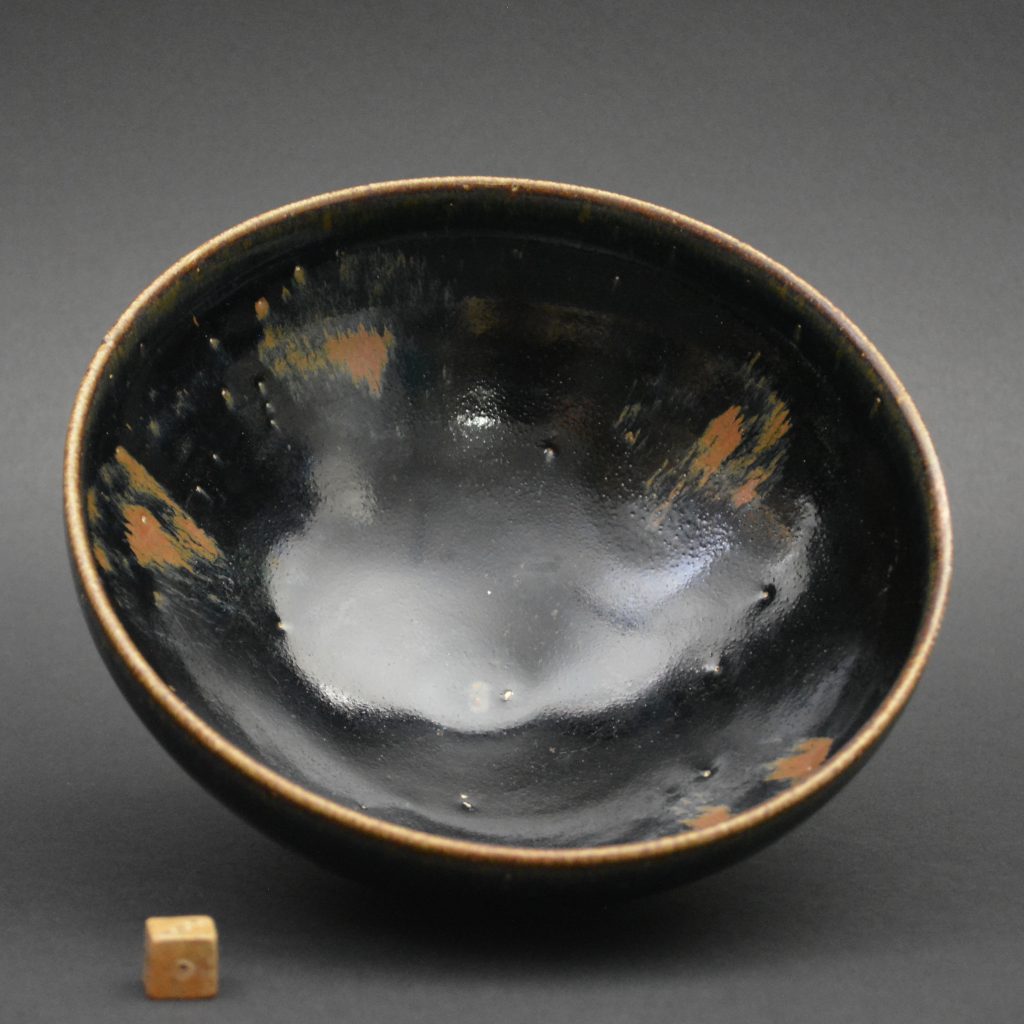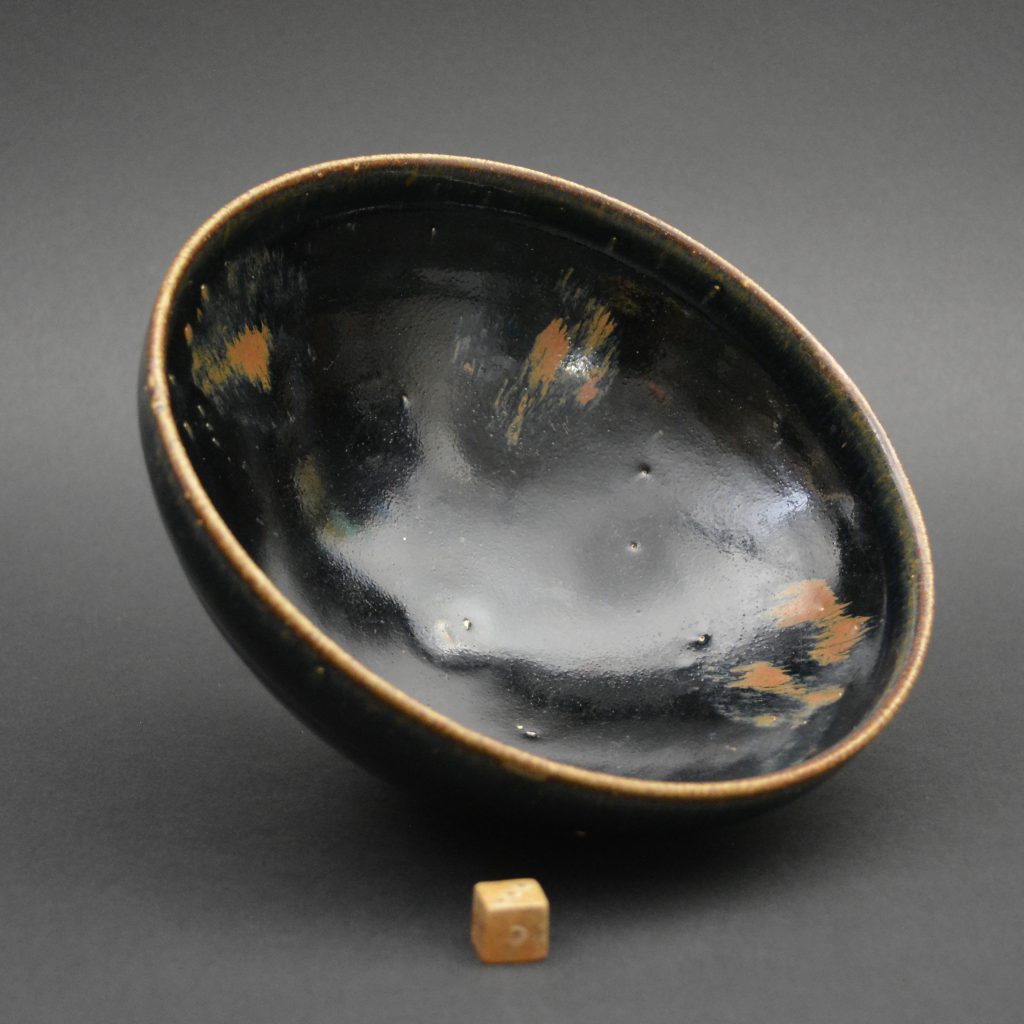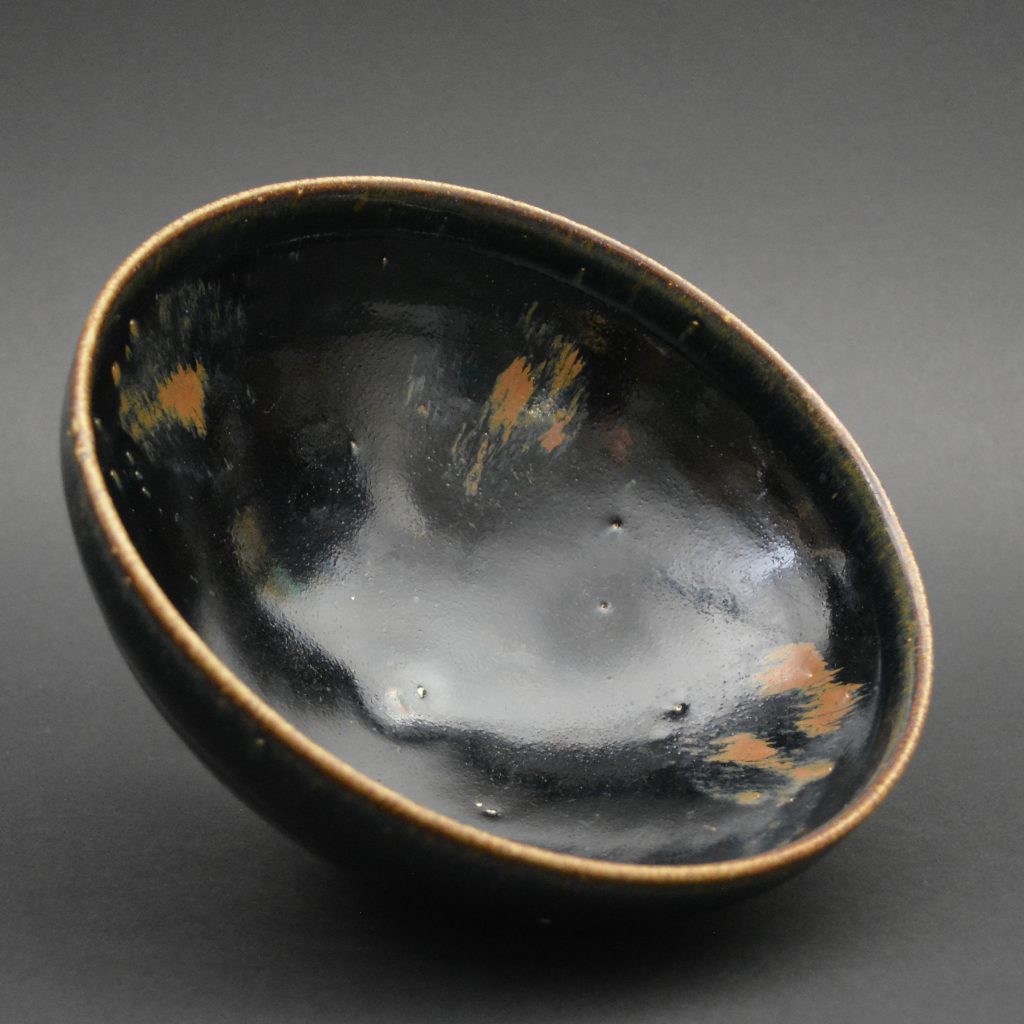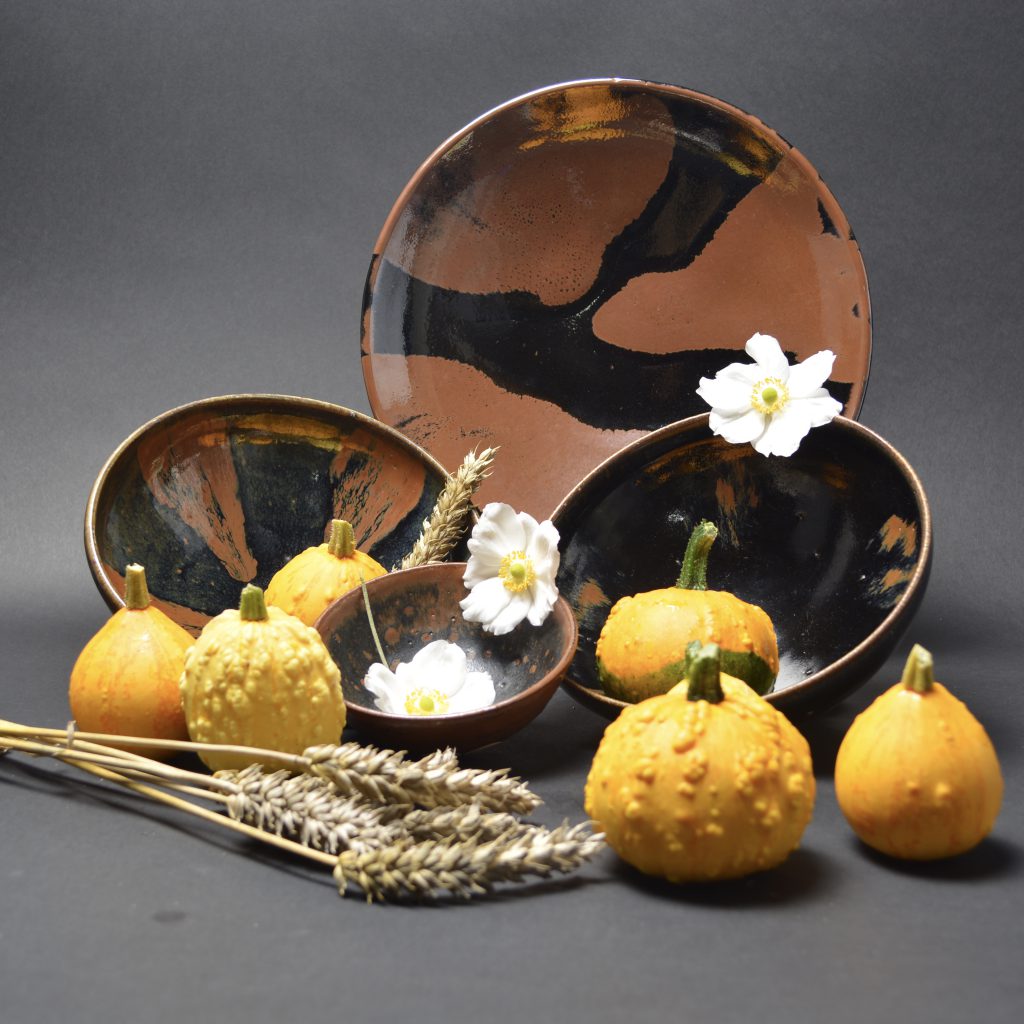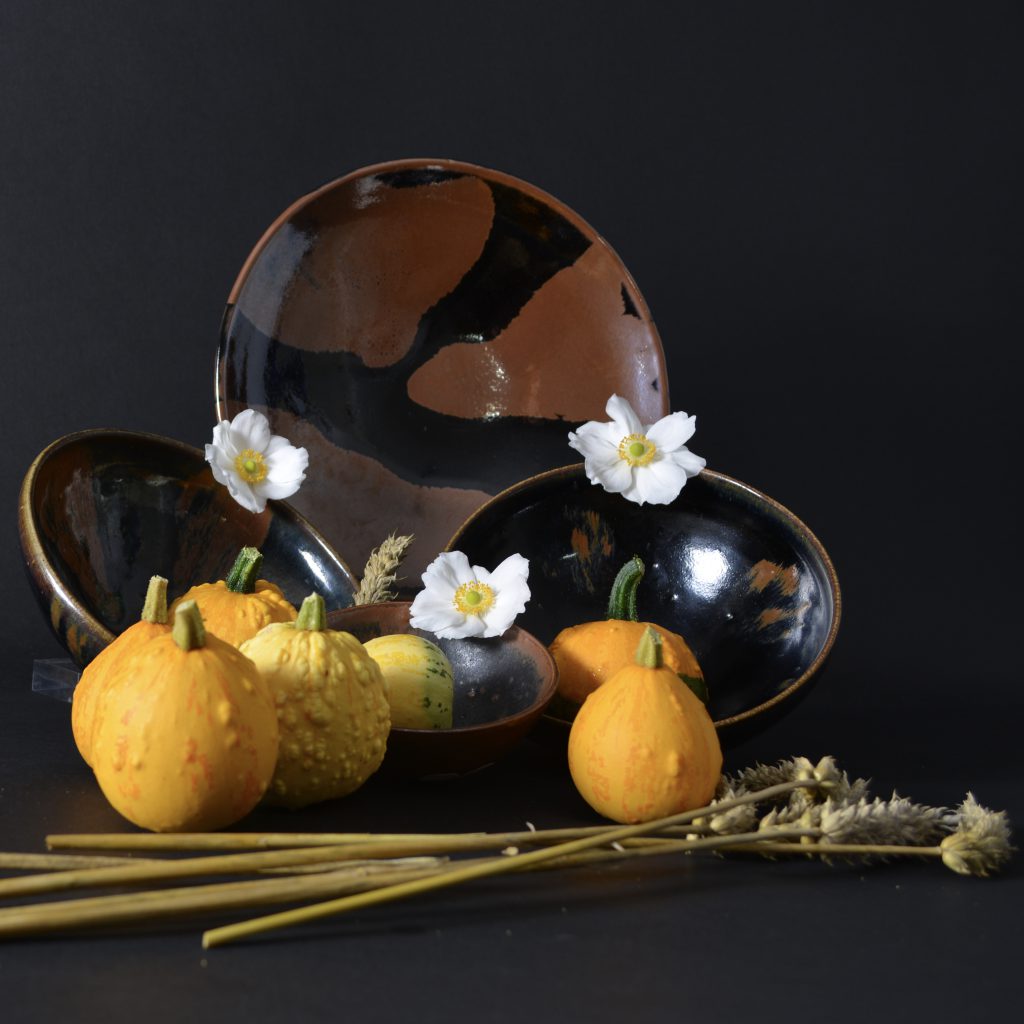
Song or Jin Dynasty Pottery Bowl of Cizhou Type
Song or Jin Dynasty Pottery Bowl of Cizhou type from the Henan-Hebei area 12th or 13th century. This Cizhou bowl is of pale grey clay resembling the colour of oatmeal. It is covered with an iron-oxide rich black glaze which is marked with five russet brown markings. These have only partially taken with russet marking having indistinct forms. The depth of black and its glossy appearance has been achieved by ‘double dipping’, that is to say a thin layer of glaze was applied first, followed by a thicker layer. The two layers can clearly be seen as well as felt on the back of this Cizhou bowl, the second layer was much thicker, it steps down to the thinner cafe-au-lait first layer.
SOLD
- Condition
- In very good condition, a few minor scratches to the well of the bowl.
- Size
- Diameter 18.8 cm (7 /12 inches) Height 8.4 cm (3 1/3 inches)
- Provenance
- Collection of Prof. Ferdinando Cappelletti, Rome. This collection of Chinese art is well know, pieces have been sold worldwide by Christie's, Sotheby's and Marchant.
- Stock number
- 25781
- References
- For a Cizhou bowl of this type with a white rim attributed to the Jin dynasty see : Hare’s Fur, Tortoiseshell, and Partridge Feathers, Chinese Brown And Black Glazed Ceramics, 400-1400 (Robert D. Mowry, Harvard University Art Museum Cambridge, Massachusetts, 1996). Page 147, plate 41. For another bowl of this type with five mottled splashes, dated 12th to 13th century, see the same publication, page 156, plate 48.
Information
Cizhou Ware
A freedom of expression exists in Cizhou ware that is unparalleled by other Song dynasty (960-1279) ceramics. This was a direct result of not being under the control of the court; consequently, the liberty to explore and experiment created an innovative range of designs full of flavour and life unique to Cizhou ware. The utilization of enamelled decorations in tones of vivid reds, yellows, and greens on occasional Cizhou pieces placed it centuries ahead of its time as this was not kosher for early court wares. The ware also displays an amazing dexterity in the sketchily incised patterns which have such a sense of carefree abandon that they appear impressionistic. Today, Cizhou ware is prized for its natural appearance which often reveals the potter’s process from the wheel’s rings, to the inner spur marks, to the unevenly glazed base.
The white stonewares of the Tang dynasty (618-906) produced two extremely influential wares; the first, Ding ware, became the official ware while the second, Cizhou, became the “popular ware” among the varying classes. It was Cizhou ware’s utilization by society that assured its continuance during political and dynastic changes which extinguished other Song wares; consequently, Cizhou ware is still produced today though the wares created during the Song dynasty are considered to possess an unrivaled spirit. Since Cizhou ware embodies a diverse range of wares not confined to a specific location, kiln complex, or style it is difficult to precisely define its characteristics.
The name Cizhou originated from the ancient area of Cizhou, encompassing a broad arc across China, which was first recorded during the Sui dynasty (581-618). However, the location constantly shifted and though the area of Cizhou is mentioned in the Tang dynasty (618-906) and Five Dynasties (906-960), each referred to an altered location. During the Song, Jin (1125-1234), Yuan (1279-1368), and partly into the Ming dynasties (1368-1644) the kiln areas of Cizhou were primarily concentrated in the northern provinces of Hebei, Henan, and Shaanxi.
Cizhou forms were particularly fashioned for household use with the most common objects being storage jars, bottles, and pillows though the rarer forms for tableware like ewers, bowls, and cups do exist. Pillows were a specialty of Cizhou ware and often display a rich variety of decoration with subjects such as children, poems, water lilies, and animals. Some of these wares bear a name mark and archaeological evidence has revealed that there were at least four workshops exclusively devoted to this enterprise; the pillows from the “Chang family” workshop continued for the longest duration. The earliest pieces of Cizhou ware are decorated in white slip and a large concentration of this ware is found at Juluxian. From this simple exterior evolved decorations which encompassed a multitude of designs, colours, and techniques.
It has been calculated that over thirty distinct types of decoration exist on Cizhou ware from the Song and Jin dynasties alone. Though a variety of decorations abound, the majority are carved, stamped, incised, or painted. Incising eventually developed into graffito, a common technique on Cizhou ware, in which a layer of slip is carved away to reveal the contrasting colour of the body or another layer of slip beneath the first. Painted designs frequently depict birds or flowers though a number of jars and bottles display calligraphy generally denoting their function as wine containers. Additionally, it is important to recognize Cizhou-type ware which was produced alongside Cizhou ware; the distinction being that Cizhou ware is coated in a clear glaze while Cizhou-type ware is covered in a brown or black glaze. Robert Mowry has classified and excellently written on six categories of Cizhou-type ware: monochrome glazes, partridge feather glazes, oil-spot glazes, painted decoration, ribbed decoration, and cut-glaze decoration.
Cizhou ware is thought to have influenced the designs found in Southeast Asia, particularly in Vietnam and Thailand. However, though the style may have drifted, the majority of Cizhou wares were produced for the domestic market; it is uncommon to discover pieces outside of China though a few remains have been uncovered in Japan, Java, Celebes, and Sarawak.
